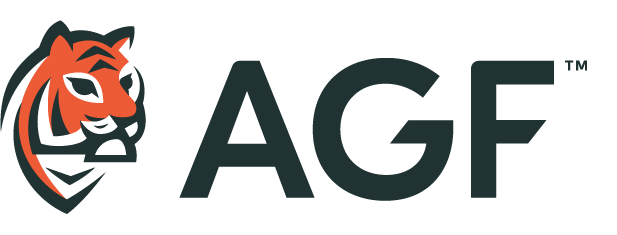
Market Quote: Canada Election Special Edition
Author: The editor's desk
April 25, 2025
A weekly analysis of what’s happening in global financial markets from the perspective of AGF’s investment management team.
Yielding to More Stimulus
One of the big implications for bond investors of the federal election is the promise of meaningful fiscal stimulus, which may cause the Bank of Canada to lean hawkish (i.e. become less accommodative) versus current baseline expectations.
In turn, this could result in upward pressure on Canadian bond yields—at least at the margins—and that may be true no matter the election outcome, with the platforms of the major parties all reflecting tens of billions of dollars of new spending and tax cuts. This potential risk is exacerbated by the fact that the baseline economic growth projections from the Parliamentary Budget Office didn’t include much of a slowdown from the tariff war.
In fact, even if there’s a minority government, there could be virtually no appetite for another election any time soon. And a minority would just mean that the other parties would have more influence on policy, which may lead to more fiscal stimulus, not less.
Moreover, bond investors can expect additional stimulus that could drive yields higher if rhetoric from both the Liberals and Conservatives about eliminating interprovincial trade barriers leads to similar deals to that struck between Ontario, New Brunswick and Nova Scotia earlier this month.
Of course, all of that could be offset by near-term economic risks associated with the ongoing U.S. tariff threat, and the ultimate direction of bond yields may largely depend on how the eventual resumption of trade talks with the U.S. administration ends up progressing over the next couple of months.

Canadian Dollar Daze
The U.S. administration’s chaotic trade policy remains the biggest wildcard driving the strength (or weakness) of the Canadian dollar (CAD), but all else being equal, the outcome of the Canadian federal election could have varying implications for the country’s currency.
Namely, we expect increases in fiscal stimulus could lead to some CAD strength versus the U.S. dollar, especially if more government spending and tax cuts result in the Bank of Canada becoming less accommodative in fear of overstimulating the economy and creating unwanted inflation.
One of the potential negatives for the loonie, meanwhile, is the potential for a minority government. Regardless of who wins, currency traders and investors may balk at the uncertainty this could entail, even if the country ends up with a functioning Parliament.
Short of that, we view promises of large infrastructure spending and the elimination of interprovincial trade barriers as being net neutral for the Canadian dollar in the immediate term, despite the potential for these measures to unlock some level of meaningful economic growth in the future.

All That is Certain?
Investors usually prefer more clarity to less. That could be true regardless of who wins Canada’s federal election, especially around how the next Prime Minister might deal with the U.S and other international governments on the trade front.
Based on history and political inclinations, a Liberal government may lead to incrementally more spending than a Conservative government, although both parties have spending and tax cut plans that should be stimulative to the economy, and in turn help lift S&P/TSX Composite Index earnings over the medium term.
Sectors which could be impacted by the outcome include the Auto sector, where the Liberals have pledged support as well as the Financials sector, where the Conservatives have prioritized deregulation and more fiscal restraint, which would provide more potential opportunities for banks to take a bigger share of the lending market. Renewable energy companies could also be in focus depending on who wins, with more emphasis on growing that sector from the Liberals.
Finally, and perhaps most importantly for the Canadian economy, the natural resource sector would potentially benefit from a more pro-growth, pro-resource government if the Conservatives prove victorious. The likelihood of more and quicker approval for stranded energy and other resource projects would help those businesses grow and attract foreign capital back to the space.

Energized
For the energy sector, this federal election could well be one of the most consequential in recent history. Commentary from the U.S. administration and the potential impact of tariffs have seemingly made energy policy a focal point for both the Conservatives and the Liberals. Each party has pledged support to get energy infrastructure built across the country.
Among industry leaders, there are some renewed hopes that government support could result in further options for them to transport commodities to international markets. It is likely that a friendlier political climate could be a tailwind for smaller-scale projects, such as further connectivity with the West Coast and Liquified Natural Gas terminals, as opposed to larger-scale, cost-intensive and politically challenged (and largely defunct) projects such as Keystone XL and Energy East. Companies have cautioned against assuming that more government support will necessarily result in a transition to “growth mode.” Instead, the energy sector could maintain the current trajectory of growing in small increments and extracting more out of their existing asset base.
Obviously, any optimism has to be tempered with recognition of a frothy macroeconomic situation for energy generally. Benchmark West Texas Intermediate crude has been sliding on fears that a prolonged trade war could cause a slowdown in the global economy and temper demand. Meanwhile, a potential market share battle is looming after OPEC+ recently decided to accelerate bringing more supply into the global market.
Despite those risks, however, we remain cautiously optimistic in terms of the impact of the election outcome—whichever party forms the government—on Canada’s energy sector.

Who Will Buy?
Perhaps the most palpable impact on consumers of the past several years of higher inflation have been rising food costs. Along with shelter, food prices are up close to 28% on a cumulative basis since the beginning of 2020, outpacing broader Canadian inflation by a cumulative 8%.
Remarkably, the leaders of the two contending parties in this month’s federal election have not explicitly addressed, let alone debated, the issue of higher food costs. Yet Canadians could see knock-on effects on prices for groceries or other household products from policies surrounding immigration and trade. Drastically lower immigration could put upwards pressure on wages, increasing operating costs for businesses, but there could also be a positive wealth effect from higher wages. Retaliatory tariffs could also result in upward pressure on prices for everyday items that are packaged and shipped across the border for Canadian distribution.
On housing, both parties have laid out proposals to rectify the current supply-demand imbalance that has left affordable housing and home ownership out of reach for many Canadians. For example, Liberals have proposed keeping caps on immigration until the housing crisis eases, while the Conservatives have proposed tying immigration to housing. Various other ideas have been proposed, including but not limited to refreshing policies around zoning and building permits to allow for faster and more widespread homebuilding, and lowering sales taxes on new homes; the Liberal party has gone so far as to propose acting as a developer and lender to homebuilders.
Such efforts to rebalance housing supply and demand should increase demand for building products and lumber, and cuts to taxes around homebuilding could benefit consumers by lowering the currently high barriers to ownership and by extension providing them with more disposable income, spurring consumption.

For full bios, please visit our contributor’s page.
The views expressed in this blog are those of the author and do not necessarily represent the opinions of AGF, its subsidiaries or any of its affiliated companies, funds, or investment strategies.
Commentary and data sourced from Bloomberg, Reuters and other news sources unless otherwise noted. The commentaries contained herein are provided as a general source of information based on information available as of April 25, 2025. It is not intended to address the needs, circumstances, and objectives of any specific investor. The content of this commentary is not to be used or construed as investment advice, as an offer to buy or sell any securities, and is not intended to suggest taking or refraining from any course of action. Every effort has been made to ensure accuracy in these commentaries at the time of publication, however, accuracy cannot be guaranteed. Market conditions may change and AGF Investments Inc. accepts no responsibility for individual investment decisions arising from the use or reliance on the information contained herein.
This document may contain forward-looking information that reflects our current expectations or forecasts of future events. Forward-looking information is inherently subject to, among other things, risks, uncertainties and assumptions that could cause actual results to differ materially from those expressed herein.
For Canadian investors: Commissions, trailing commissions, management fees and expenses all may be associated with investment fund investments. Please read the prospectus before investing. Investment funds are not guaranteed, their values change frequently, and past performance may not be repeated.
AGF Investments is a group of wholly owned subsidiaries of AGF Management Limited, a Canadian reporting issuer. The subsidiaries included in AGF Investments are AGF Investments Inc. (AGFI), AGF Investments America Inc. (AGFA), AGF Investments LLC (AGFUS) and AGF International Advisors Company Limited (AGFIA). AGFI is registered as a portfolio manager across Canadian securities commissions. AGFA and AGFUS are registered investment advisors with the U.S. Securities Exchange Commission. AGFIA is regulated by the Central Bank of Ireland and registered with the Australian Securities & Investments Commission. The term AGF Investments may refer to one or more of these subsidiaries or to all of them jointly. This term is used for convenience and does not precisely describe any of the separate companies, each of which manages its own affairs.
AGF Investments entities only provide investment advisory services or offers investment funds in the jurisdiction where such firm, individuals and/or product is registered or authorized to provide such services.
Investment advisory services for U.S. persons are provided by AGFA and AGFUS. In connection with providing services to certain U.S. clients, AGF Investments LLC uses the resources of AGF Investments Inc. acting in its capacity as AGF Investments LLC’s “participating affiliate”, in accordance with applicable guidance of the staff of the SEC. AGFA engages one or more affiliates and their personnel in the provision of services under written agreements (including dual employee) among AGFA and its affiliates and under which AGFA supervises the activities of affiliate personnel on behalf of its clients (“Affiliate Resource Arrangements”).
® ™ The “AGF” logo and all associated trademarks are registered trademarks or trademarks of AGF Management Limited and used under licence.
About AGF Management Limited
Founded in 1957, AGF Management Limited (AGF) is an independent and globally diverse asset management firm. Our companies deliver excellence in investing in the public and private markets through three business lines: AGF Investments, AGF Capital Partners and AGF Private Wealth.
AGF brings a disciplined approach, focused on incorporating sound, responsible and sustainable corporate practices. The firm’s collective investment expertise, driven by its fundamental, quantitative and private investing capabilities, extends globally to a wide range of clients, from financial advisors and their clients to high-net worth and institutional investors including pension plans, corporate plans, sovereign wealth funds, endowments and foundations.
Headquartered in Toronto, Canada, AGF has investment operations and client servicing teams on the ground in North America and Europe. AGF serves more than 800,000 investors. AGF trades on the Toronto Stock Exchange under the symbol AGF.B.
For further information, please visit AGF.com.
© 2025 AGF Management Limited. All rights reserved.







